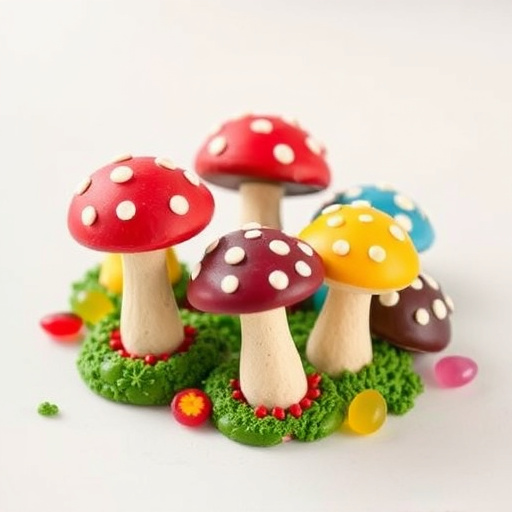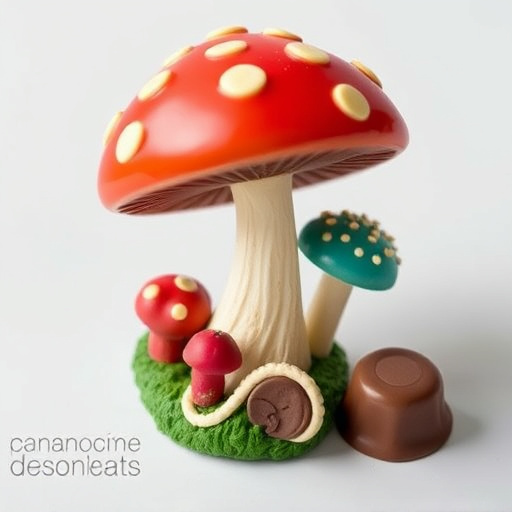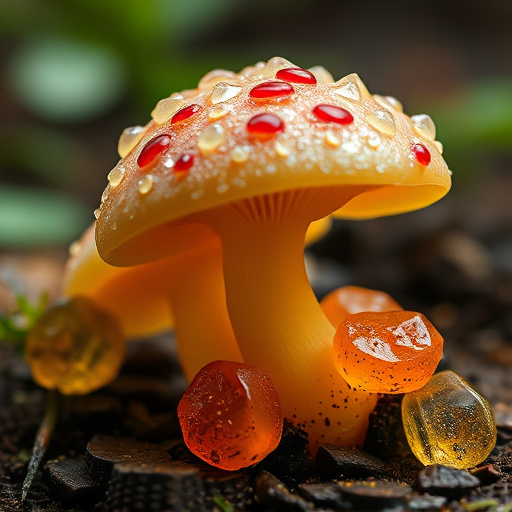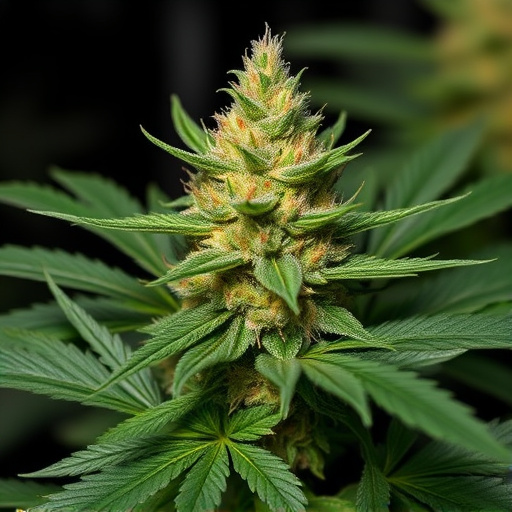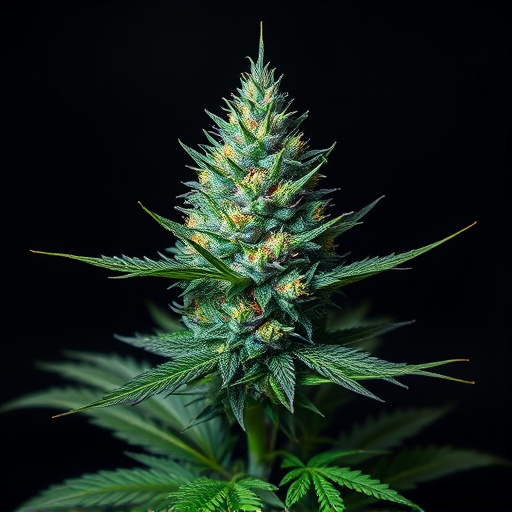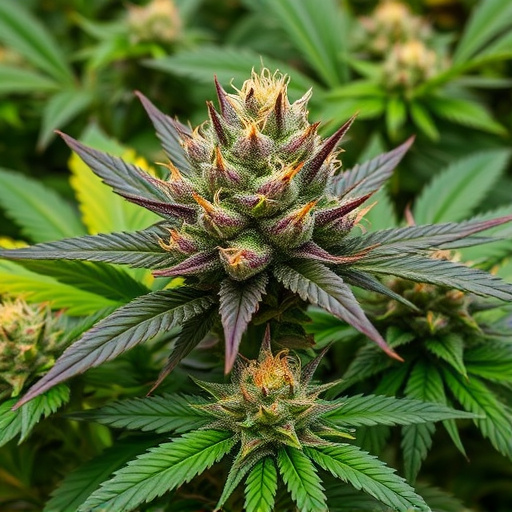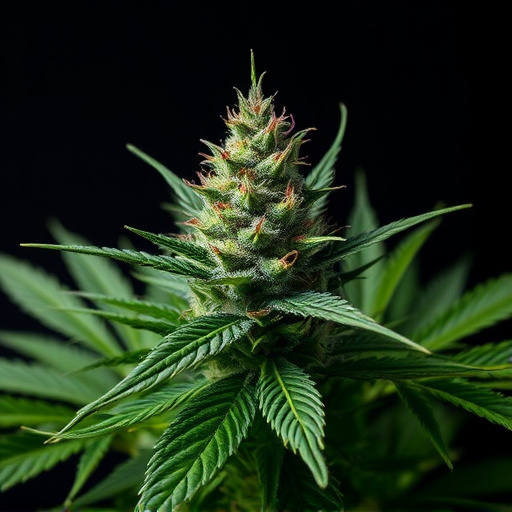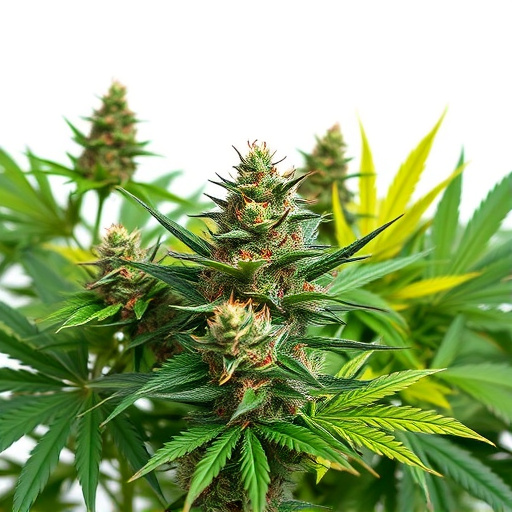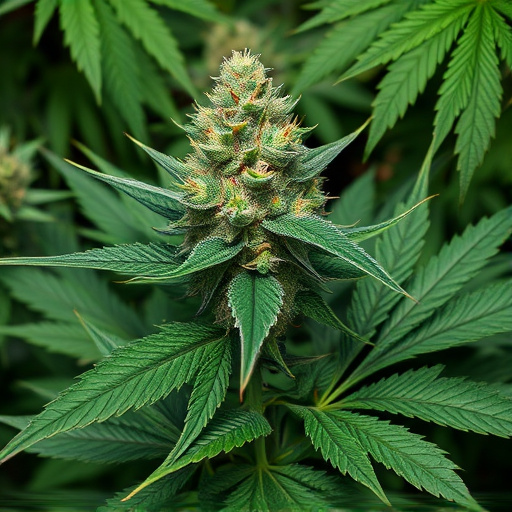Cannabis plants display vibrant colors, primarily due to anthocyanins and flavonoids, which offer both protective and antioxidant benefits. The interaction of these compounds creates the diverse spectrum of types of cannabis strains, each with unique genetic traits, cannabinoid profiles, and terpene composition. Environmental factors like soil, climate, altitude, and sunlight significantly influence these characteristics, contributing to the wide range of visual appearances and potential therapeutic effects observed among different types of cannabis strains.
Uncover the mysteries behind the vibrant hues of cannabis with our comprehensive guide. Cannabis plants boast a captivating array of colors, from deep purple to fiery red and serene blue—but what causes these striking variations? This article delves into the fascinating world of cannabis pigments, exploring the science behind its color spectrum. We dissect the role of genetics in creating diverse strains and examine environmental factors, or ‘terroir,’ that influence these unique visual traits, providing insights for both curious enthusiasts and industry professionals alike. Discover the secrets that make each type of cannabis strain truly one-of-a-kind.
- Understanding Cannabis Pigments: The Science Behind Purple, Red, and Blue
- Genetic Factors: Unlocking the Secrets of Diverse Strains
- Environmental Influences: How Terroir Shapes Color and Effects
Understanding Cannabis Pigments: The Science Behind Purple, Red, and Blue
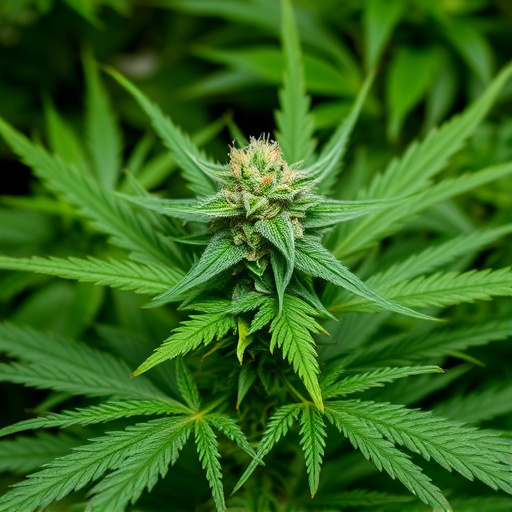
Cannabis plants exhibit a diverse range of colors, with purple, red, and blue being particularly intriguing. Understanding the science behind these pigments is key to appreciating the complexity of cannabis strains. These colors are primarily derived from two types of natural pigments: anthocyanins and flavonoids. Anthocyanins, responsible for shades of red, purple, and blue in many plants, play a crucial role in protecting cannabis leaves from UV radiation and other environmental stressors. The intensity and hue of these pigments can vary based on genetic factors, creating the captivating variations observed among different types of cannabis strains.
Flavonoids, on the other hand, contribute to the yellow, orange, and red hues in cannabis. They possess antioxidant properties and are known to interact with anthocyanins, influencing the overall color expression. The intricate interplay between these pigments results in the stunning visual diversity seen in various cannabis strains. This natural coloring not only captivates growers and enthusiasts but also serves as an indicator of potential therapeutic benefits associated with specific types of cannabis strains.
Genetic Factors: Unlocking the Secrets of Diverse Strains
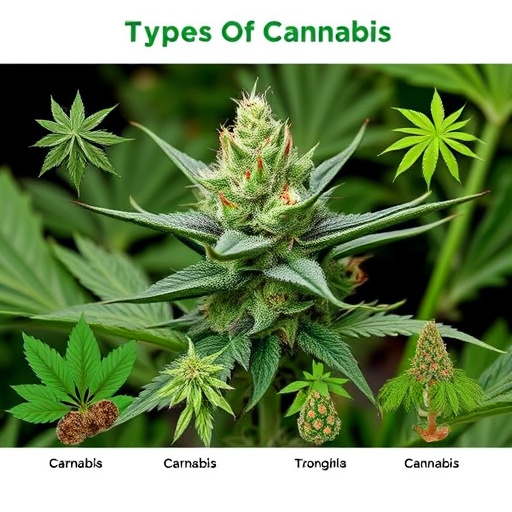
The world of cannabis is incredibly diverse, with an array of types of cannabis strains available, each boasting unique characteristics. Genetic factors play a pivotal role in shaping these variations. Cannabinoid and terpene profiles, determined by an organism’s genetic makeup, are what truly differentiate one strain from another.
Scientists and cultivators have been unlocking the secrets of these genetic variations, allowing for the development of new strains with specific effects and aromas. By carefully controlling breeding and selection processes, it’s possible to create hybrid strains that combine the best attributes of multiple ancestors, resulting in a vast spectrum of potential benefits and experiences for users.
Environmental Influences: How Terroir Shapes Color and Effects
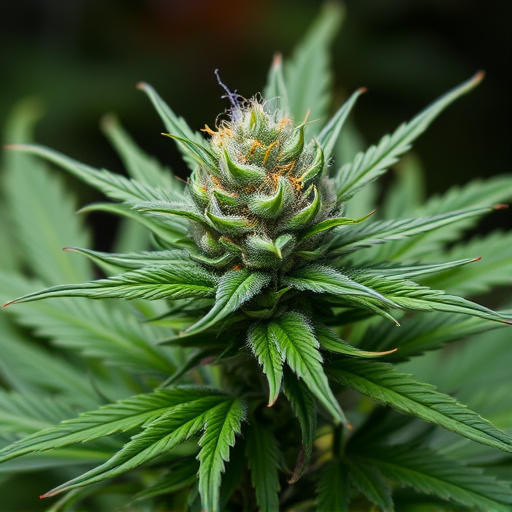
Cannabis plants, like many others, are highly sensitive to their surrounding environment, a concept known as terroir. This environmental influence plays a significant role in shaping the color and effects of different types of cannabis strains. The unique interplay between soil composition, climate, altitude, and sunlight exposure contributes to variations in cannabinoid profiles and pigments, ultimately affecting the final appearance and experience of the user.
For instance, cooler climates often result in strains with deeper, richer colors due to altered metabolic processes. Sunlight intensity and duration also play a critical role, leading to distinctions between indoor-grown, outdoor, or hybrid cannabis strains. These environmental factors influence not only the visual appeal but also the therapeutic potential, as specific cannabinoid concentrations can vary widely based on terroir.
In exploring what causes purple, red, and blue weed, we’ve uncovered a fascinating interplay between science, genetics, and environment. The vibrant hues these cannabis strains display are not merely aesthetic; they’re the result of complex chemical compounds and unique terroirs. Understanding these factors not only enriches our appreciation for the diversity of types of cannabis strains but also empowers cultivators to optimize their crops’ potential. By delving into these secrets, we can expect even more innovative and specialized cannabis products in the future.
